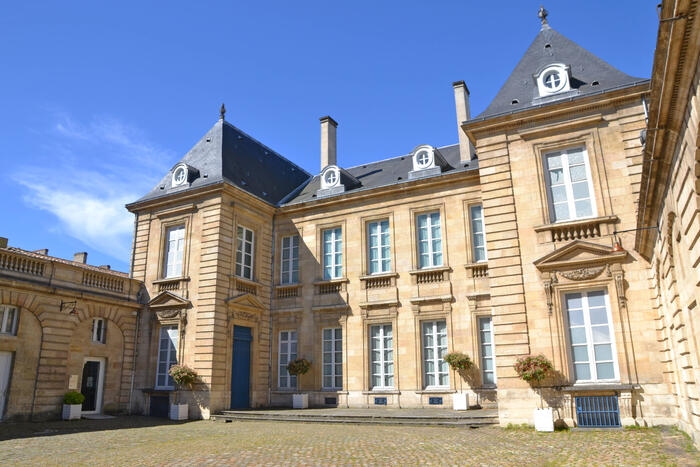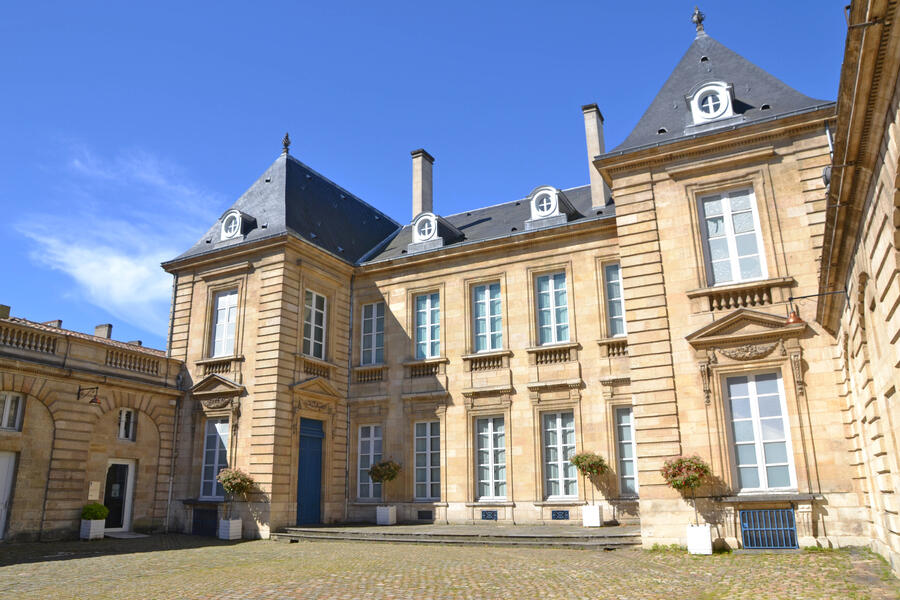The hôtel de Lalande
The hôtel de Lalande was built at the end of the Ancien Régime for a family of wealthy local parliamentarians. Standing between the courtyard and the garden, this stately, imposing townhouse is one of the most beautiful aristocratic residences of 18th century Bordeaux. Bearing witness to the power of the urban elite, it is also an outstanding example of the architectural wealth that has made Bordeaux a UNESCO World Heritage Site.
In 1775, Pierre de Raymond de Lalande (1727-1787), a councilor to the Parliament of Bordeaux, acquired a large plot of land near to the Palais Rohan in Saint Christoly Parish, and in 1778 filed a request to build a residence there. In his Description Historique de Bordeaux (1785), Paul Pallandre attributed its construction to “M. Etienne Laclotte, a well-known architect who produced a number of masterpieces in Bordeaux.” He goes on to describe the Hôtel de Lalande as possessing “the greatest nobility, its entrance beautiful, its courtyard, the structure itself, the staircase, the configuration, the garden — everything is ingenious.”
In 1752, Pierre de Raymond de Lalande had married Jeanne de Lalande-Gayon (1734-1817), Lady of Urtubie and the owner of extensive holdings in the colony of Saint Domingue (present-day Haiti). When her husband died in 1787, less than ten years after they moved into the townhouse, she renounced her inheritance rights in favor of their eldest son, Jean de Raymond de Lalande. Due to his noble status and his service as an attorney in the Parliament of Bordeaux, Jean was arrested during the Revolution and guillotined in Place Nationale (now Place Gambetta) on July 10, 1794. His sister Pétronille suffered the same fate.
Sold in 1828, the property of the Lalande heirs changed hands several times during the 19th century. The townhouse was first purchased by Madame Marthe Gabrielle Budan Asselin, a wealthy Creole from Martinique, then in 1839 by a merchant named Jean-Baptiste Duffour Debarte, who bequeathed it to his son Lodi Martin Duffour Dubergier, mayor of Bordeaux from 1842 to 1848. Perhaps strangely, none of these owners actually lived in the lovely residence, but leased it to the governor of the 11th military division. When Duffour Dubergier died in 1860, another merchant, Antoine Dalléas, took over the property. Finally, in 1880 the city of Bordeaux acquired the hôtel de Lalande and converted into a police and vice control headquarters.






